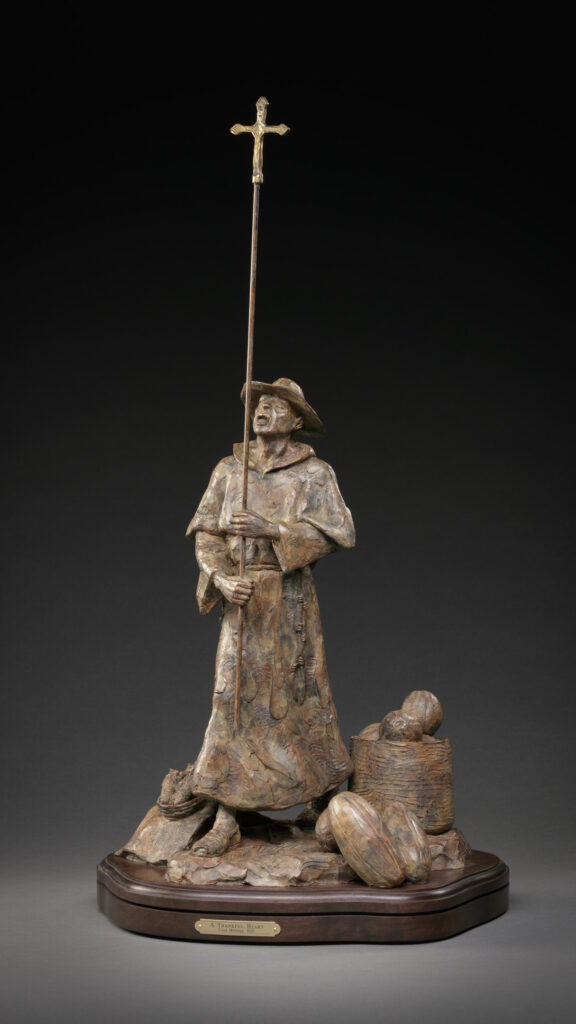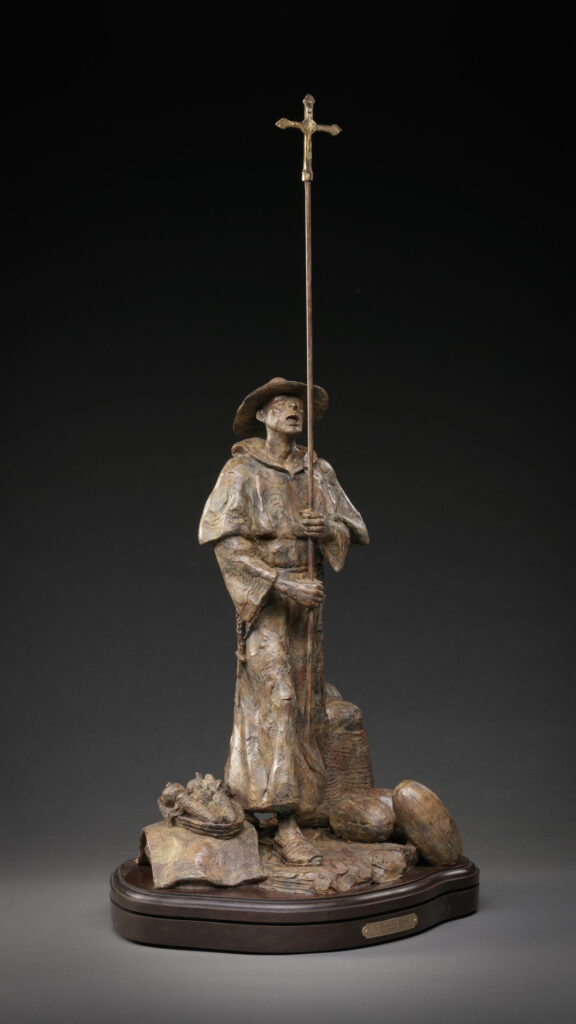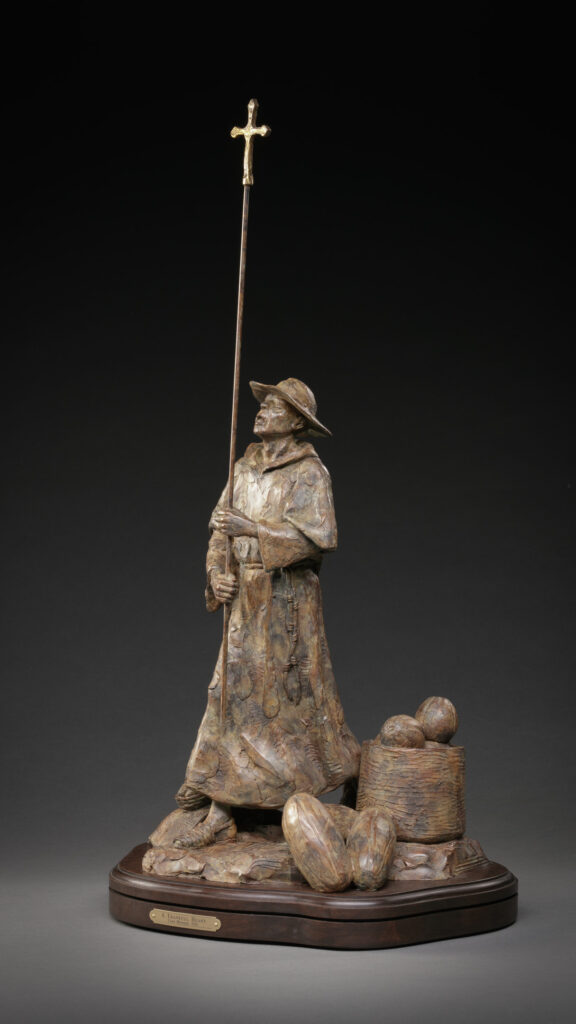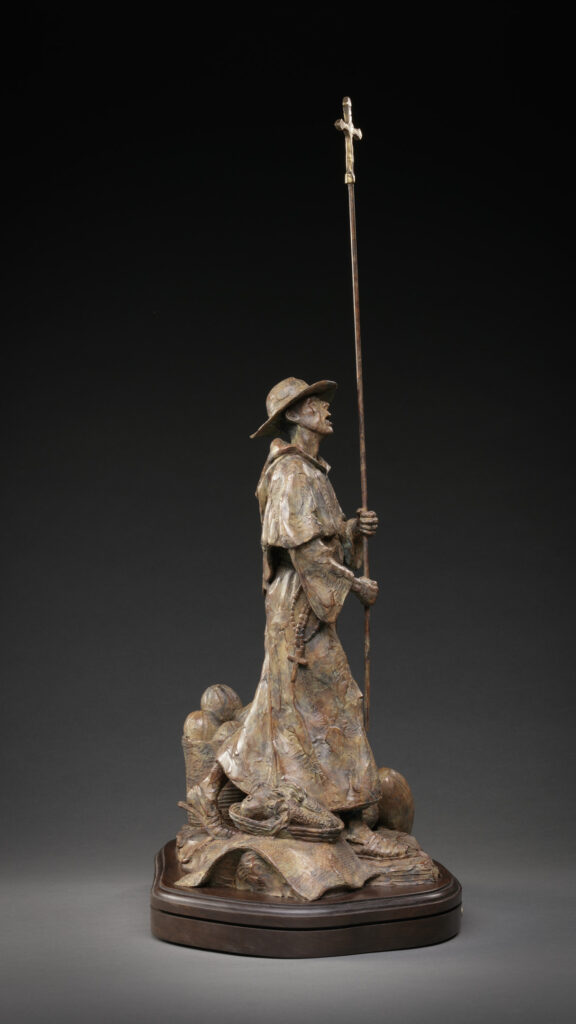



29 ½” x 14” x 12”
Limited Edition of 9
$6,100.00
Let Curt tell you about this piece!
The mission era, both in Arizona and California, is one of the most interesting periods of western history. While the missions of California are well known, the missions in Arizona are not as well known, but just as important in the development of Western America. As you delve into the events of this period, dating back to 1691, it is truly remarkable what the first Jesuits, then Franciscan padres went through as they sought to bring the Gospel to this wild region. My main focus has been the Franciscan period which began in 1767. What the Franciscans endured is truly heroic. Their adventures are documented in the journals of Fransisco Garces and Pedro Font. Font was at the San Jose de Tumacacori mission for three years in Southern Arizona. He would then join the De Anza expedition and travel across deserts and up the coast of California to establish what would become the mission system.
Tumacacori is situated 45 miles south of Tucson, just beyond Green Valley, Arizona. It is right off highway 19. It is located in a lush valley where the Santa Cruz river runs. It is an extremely well preserved national park. As you walk the grounds, you get a feel for what it was like for these padres to live and work among the native people who lived there. You can see where it started with small quarters in which the padres lived. The mission grew and expanded. The padres had a desire to improve the lives of the O’odham tribe who were living in the area at that time. These padres taught the Indians to farm in a way that was more productive and brought greater health and well being to them. As well, the mission provided protection from rival tribes, the Yaqui and Apache in particular, who raided the tribe regularly. The constant battles were lessened by the missions protection.
There was an abundance of crops raised there, as well as cattle and sheep. Each mission was to be self sustaining. Storage was built there for crops. They grew winter wheat, figs, apricots, pomegranate and peaches, among other things. This was a great improvement over what the Indians had known. Ultimately, it was the message of Christ that was of greatest import and the mission was to be a place of spiritual and material sustenance. Mass was conducted daily and then the people went to work in the fields.
There were many celebrations throughout the year. Crops were produced in abundance and the people knew God was responsible for that blessing. This piece depicts one of the Franciscan padres carrying a cross and singing praise songs to the Lord. Around him is the evidence of the blessings that had come their way. Pomegranate, corn, cantaloupe and watermelon are depicted on either side of the padre. These represent just a few of the crops grown there. The cross is elevated high and shines brightly as a reminder of Who is the Source of the blessings the mission had received. This padre is showing his appreciation for all the Lord has done. He is expressing “A Thankful Heart”.